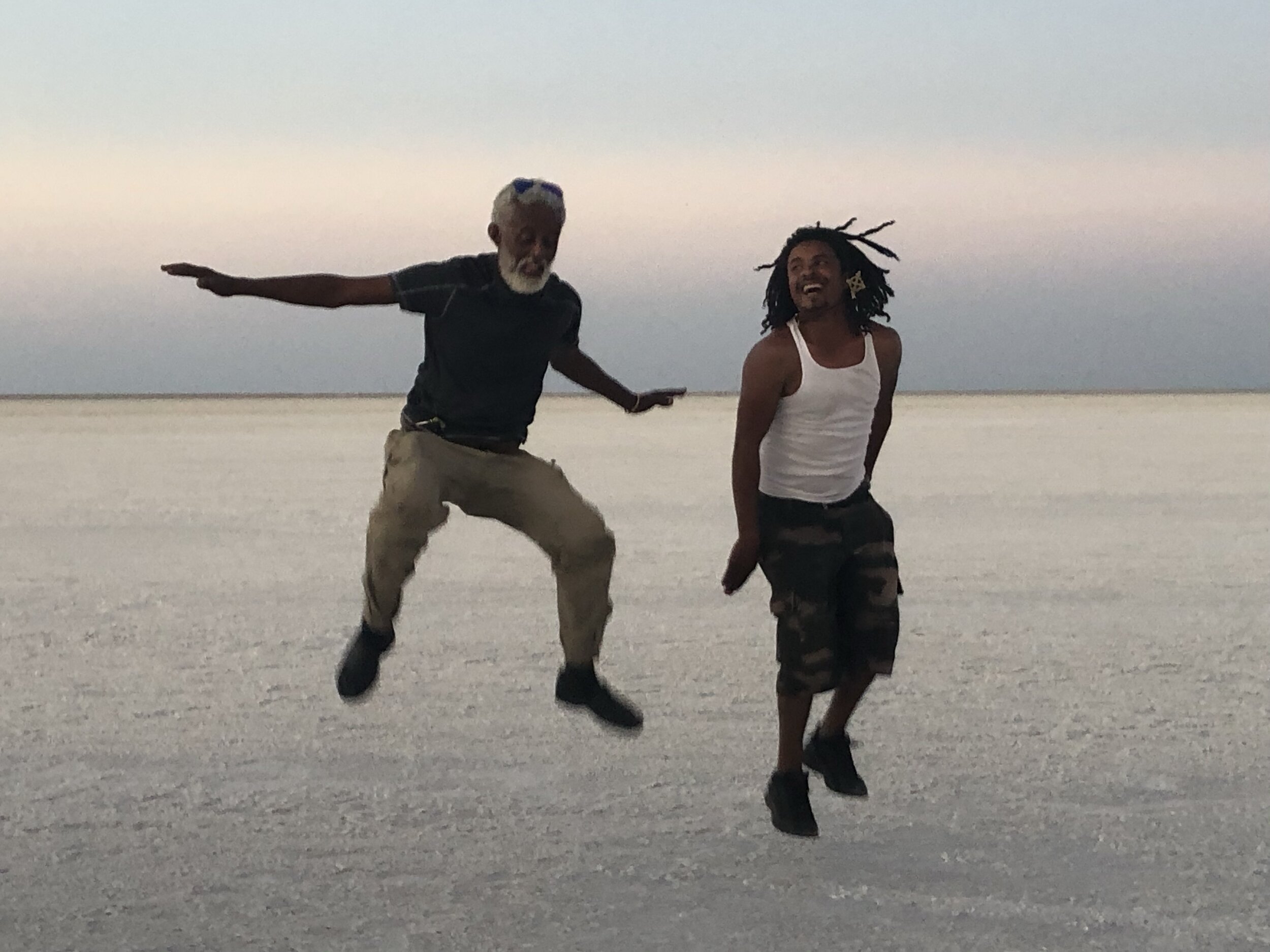Ethiopia “Afar”
“Afar”, a northern region of Ethiopia bordering Eritrea with Djibouti to the east on the Red Sea, is home to the “Danakil Depression”. A vast salt desert, 200 by 50 kilometers, at 410 ft. below sea level, it is considered among the lowest places and definitely the hottest on earth with year-round temperatures that regularly reach 120 degrees Fahrenheit. Barely any rain falls here. No vegetation, drinking water or animal life except a few passing birds. Men however, mine the salt, carving them into bricks transported later by camels and donkeys. (Their harsh lot is portrayed below.)
The Danakil Depression was formed by three tectonic plates that millennia ago separated the continents of Africa and Asia, causing major rifting, volcanic activity, still active today, erosion, as well as partial evaporation of the Red Sea.
Here, I was reminded of castles we’d build on the beach using slow drips of wet sand with our children. Images of snorkeling amid coral reefs also arose as I tried to wrap my mind around this surreal landscape. The harsh, beating sun made for a quick reminder that this was not the case… We were nowhere near the sea, a lake or a river — just scorchingly hot mineral waters.
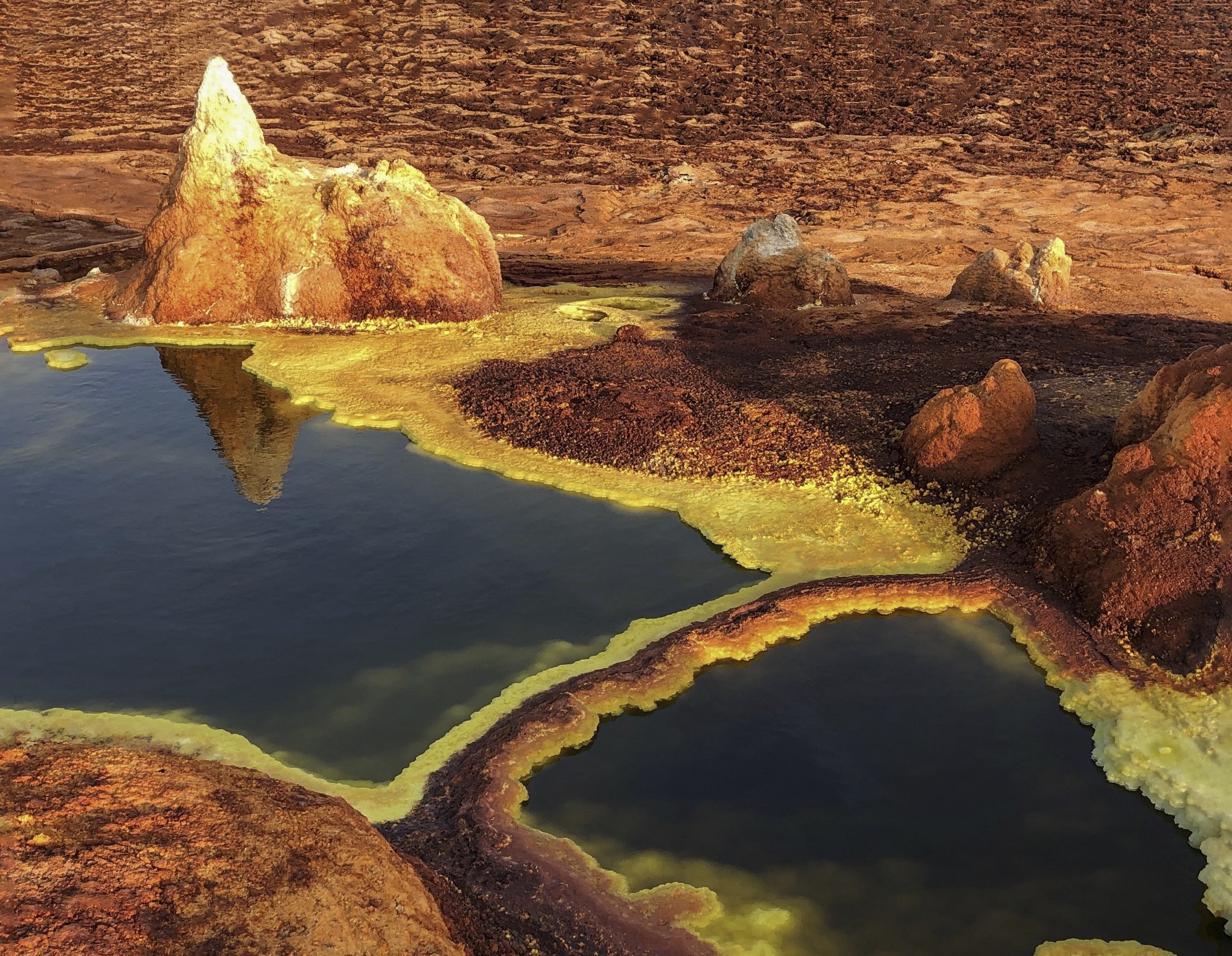
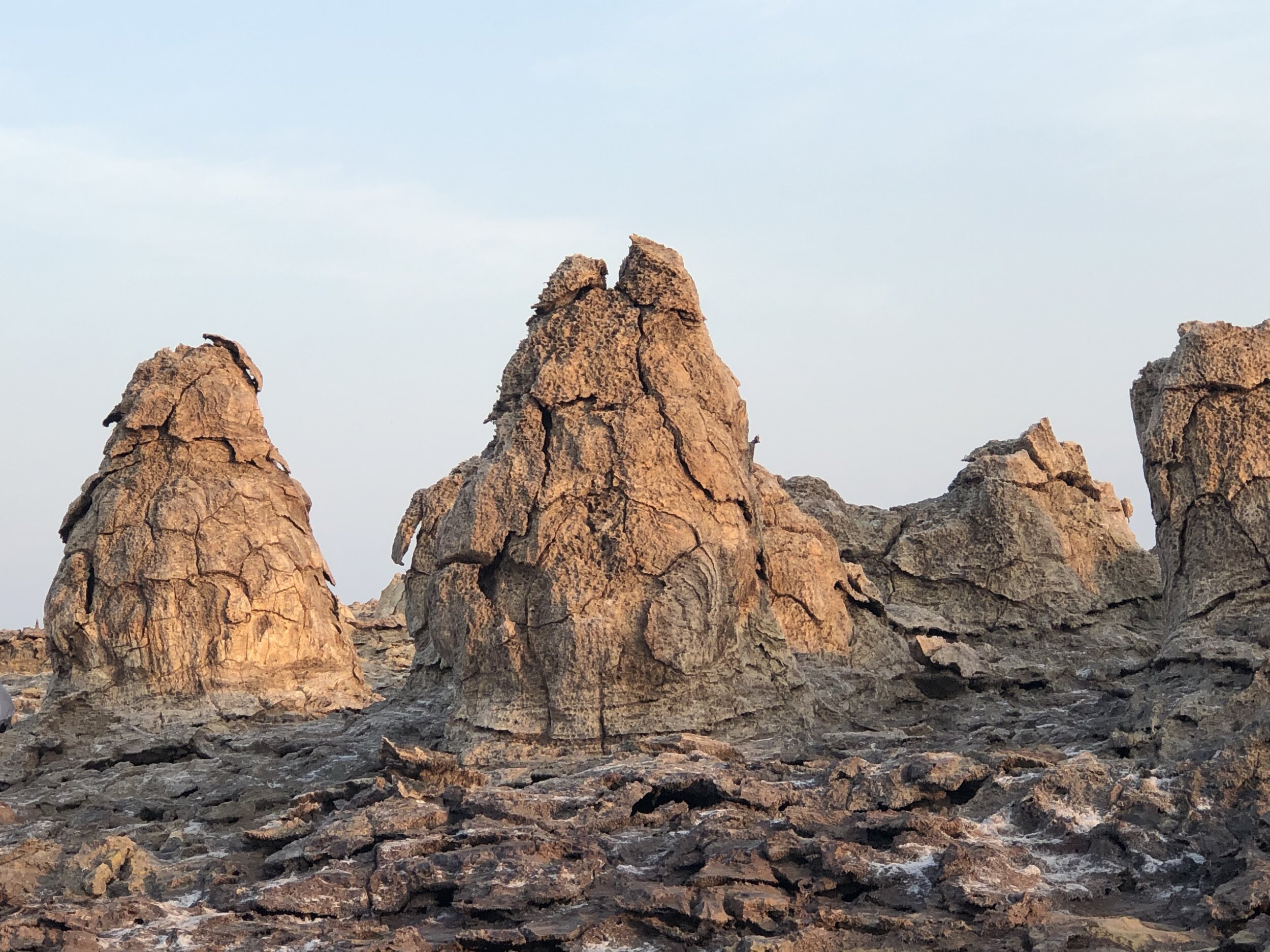
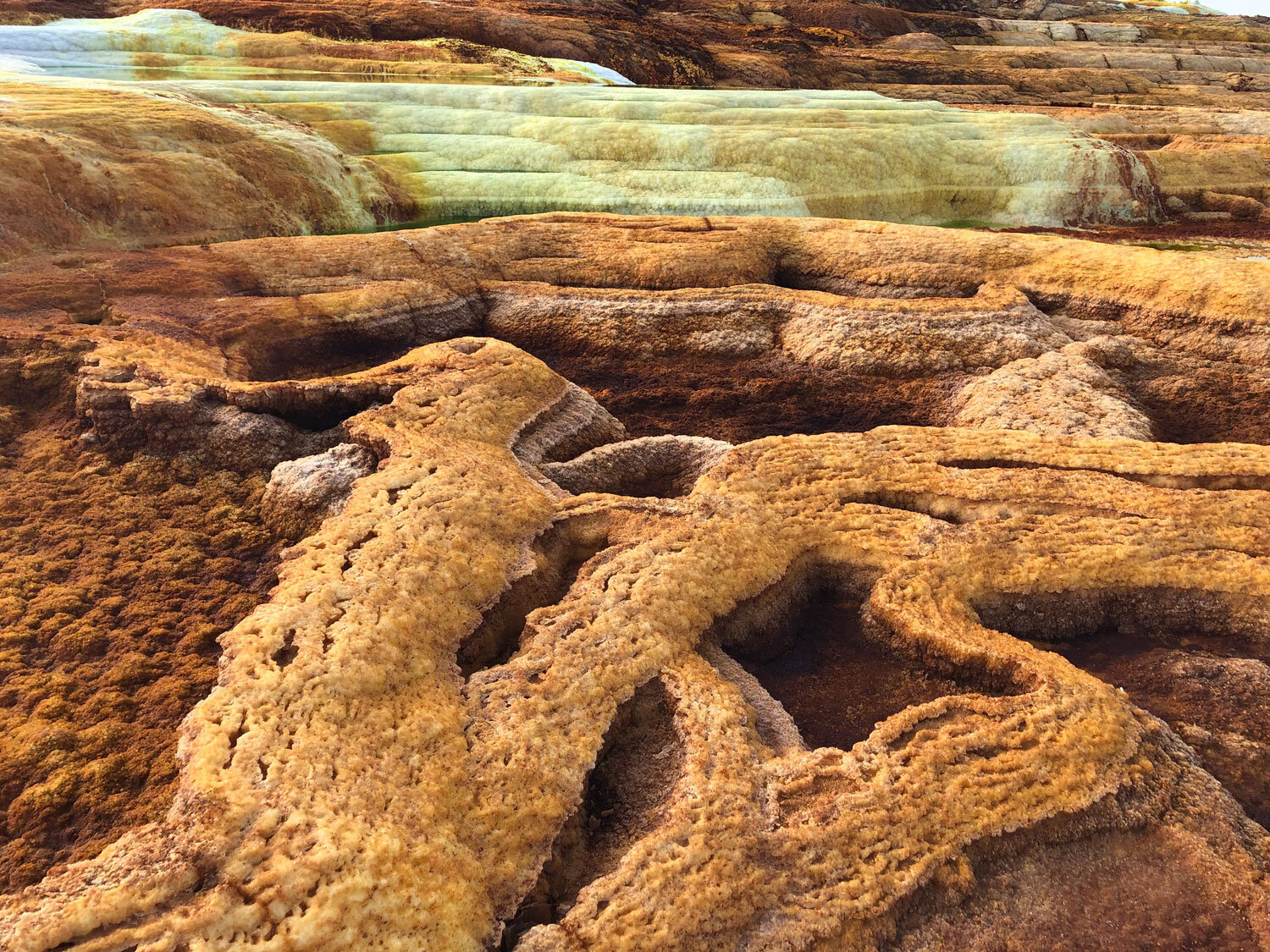
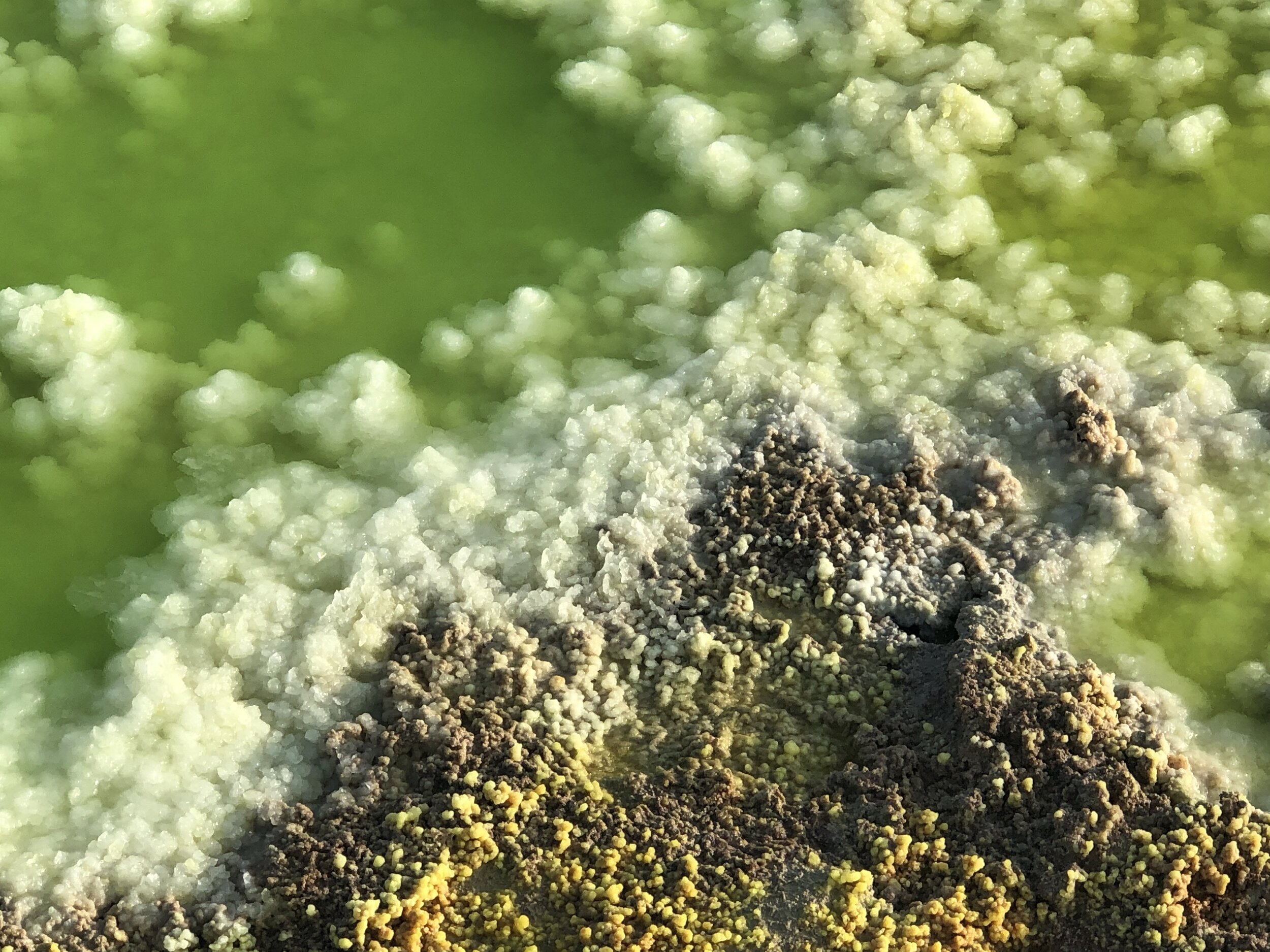
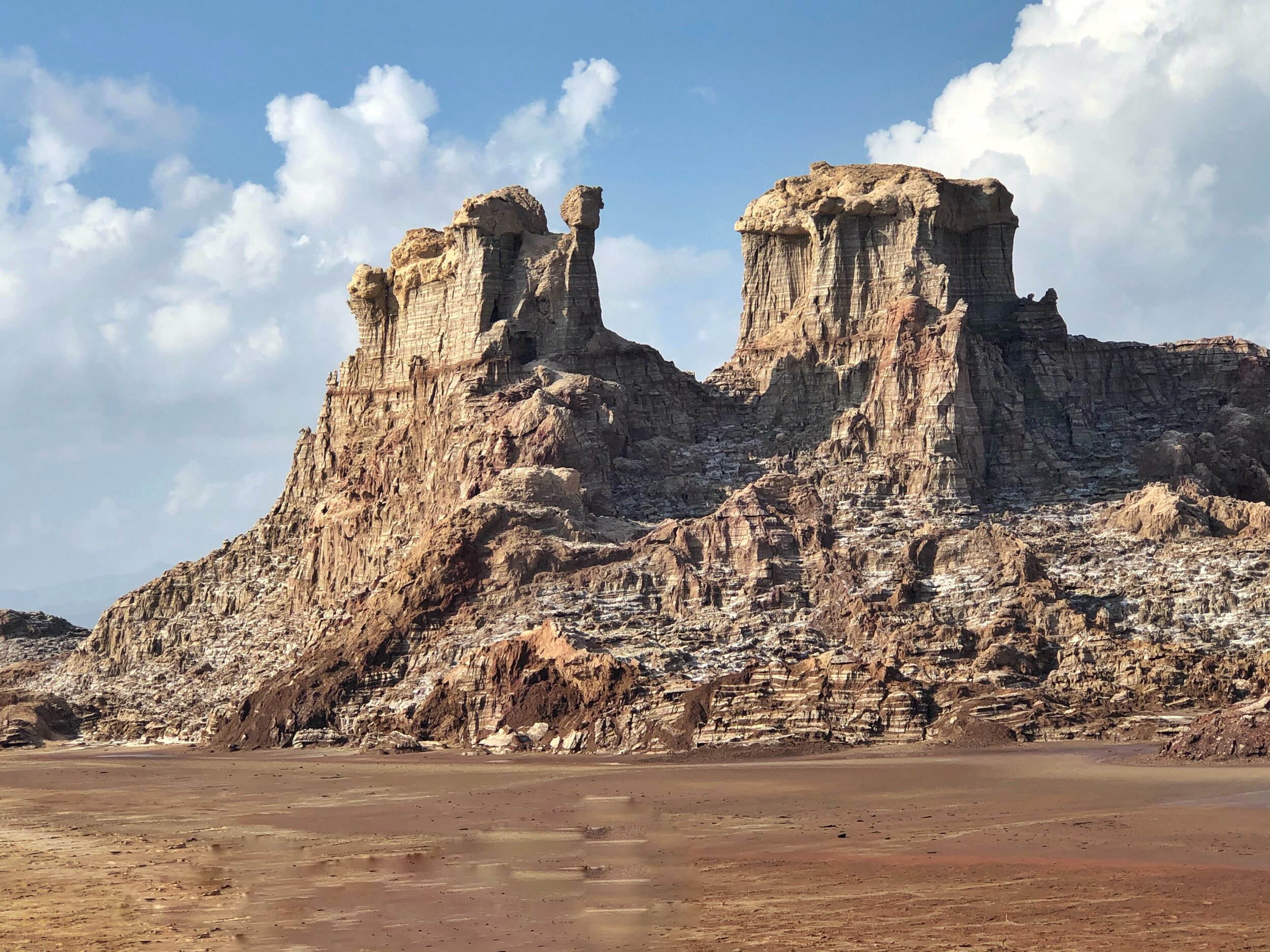
I chose the title, “Afar”, because it is one of the most remote, bizarre, exotic, otherworldly places on earth. In our recent visit, after a very long and at times harrowing drive through the Rift Valley, my husband, David and I and a small group led by John Leupold and wonderful Ethiopian guides, were being offered a glimpse into what might be akin to landing on another planet.
After traversing by four-wheel drive an infinite expanse of a dirty gray and then, dazzling white, solid salty crust came an olfactory experience. At dawn, after a rather treacherous rocky hike, we came upon steaming fumeroles accompanied by a familiar but intense smell of sulfur. For all of us, this also amounted to a visual relief all with bright colors and three-dimensional forms in all shapes and sizes. In contrast to the barren, forlorn landscape we wandered amidst contorted, twisting salt sculptures reminiscent of earth art. But these came in a rainbow of psychedelic orange, lime green, golden amber, and turquoise colors, a challenge for any artist to imagine, let alone replicate.
Aside from offering a photographer’s paradise, this visit was also a lesson in mineralogy. I learned such colors stemmed from potassium, sulfur dioxide, potash and magnesium being spewed from the innards of the earth. In addition, it is an astronomer’s dream. While spending the night on handmade cots, we were also privy to a heavenly sky. The universe shone brighter than I ever could imagine.
The Salt Mine Workers:
And then we came upon another desolate area where the word, depression takes on another meaning. With basic tools, workers chisel and shape salt into bricks, which they then load onto camels, donkeys and trucks that transport them to markets. Here, our trip leader, John, handed out much appreciated sunglasses to the men who work relentlessly in dire conditions and for a pittance.
Preparing to Load bricks on camels
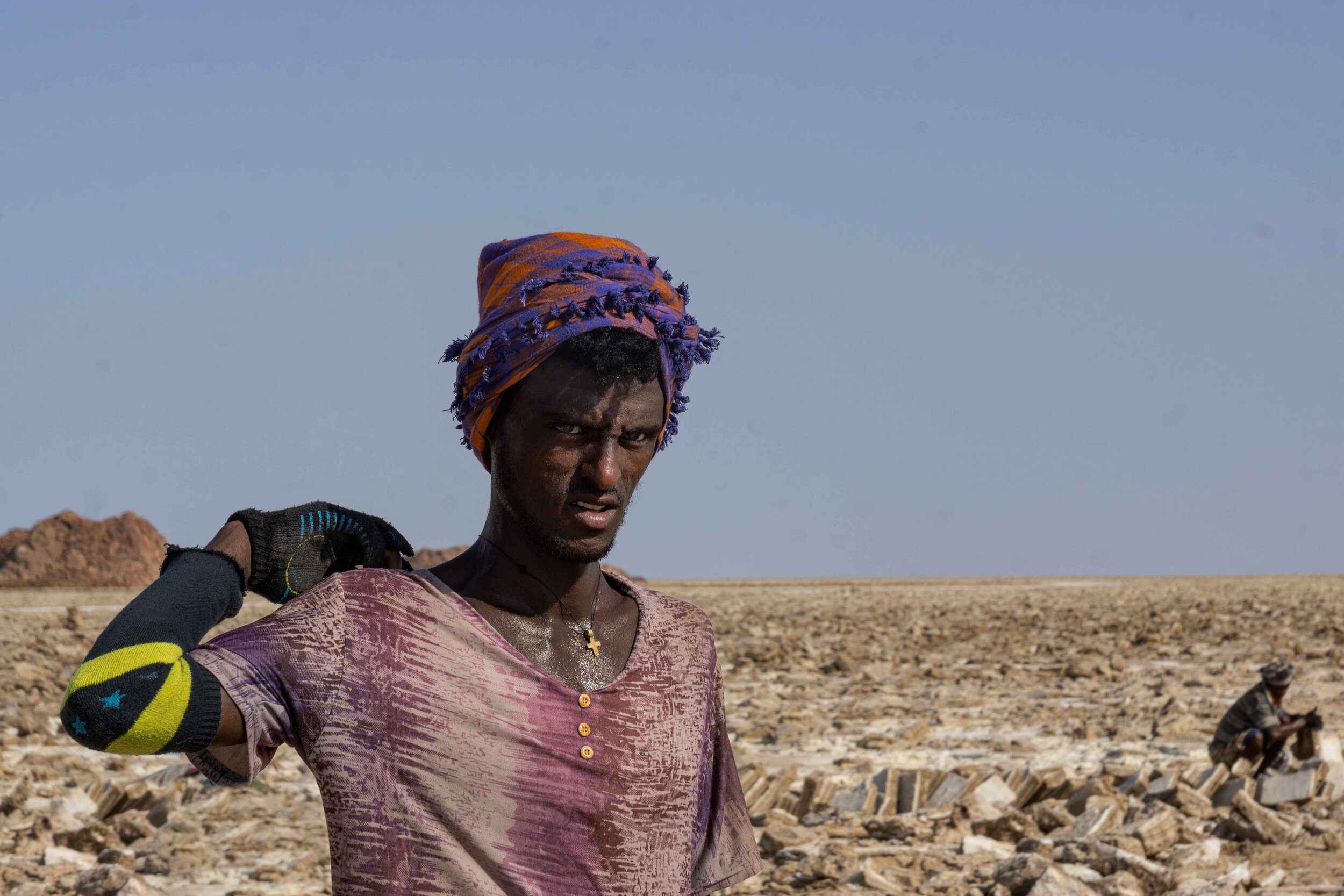
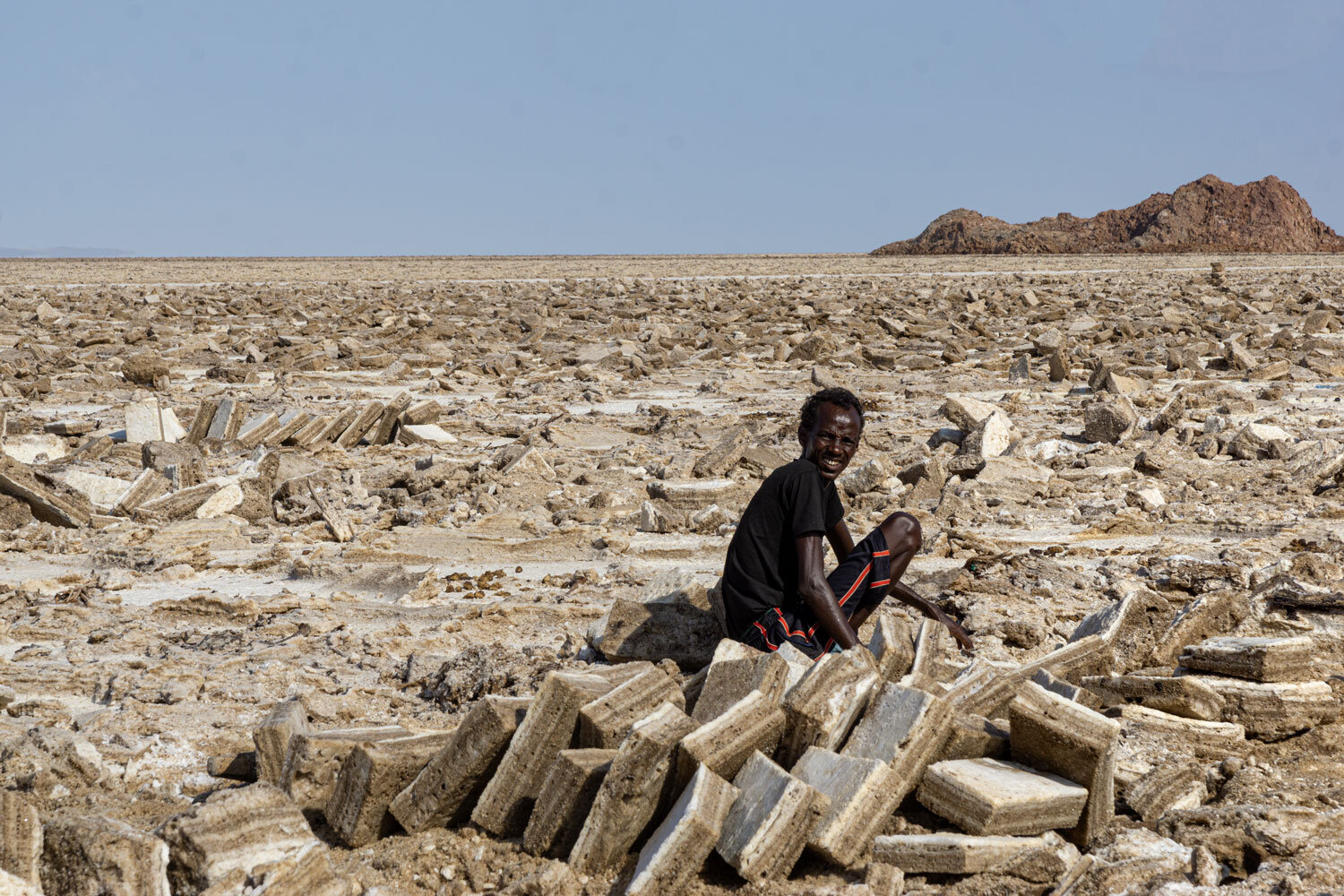
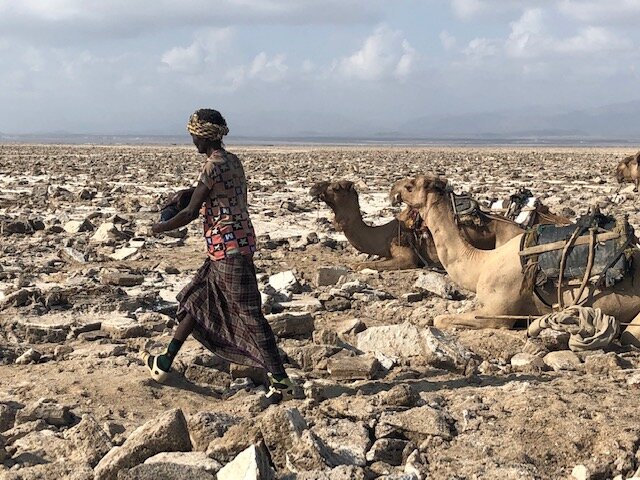

Going Back in Time:
The presence of our species, in what must have been a most different environment, endows this part of the world with the title: “the cradle of humanity”. Having just seen the fossil of the famous Austrolapithecus, Lucy, at a national museum in Addis Ababa, we then learned that she was discovered in this region by the paleoanthropologist, Donald Johanson in 1974. Her dates go“afar” as well: 3.2 million years. Many other fossils of ancient proto-hominids have also been uncovered here.
And finally at sunset our guide and driver having a little fun to some Ethiopian music:
Sending you all the best for 2020! May your travels — wherever they may take you, bring you joy and fulfillment!
To see more on Ethiopia, please visit:






